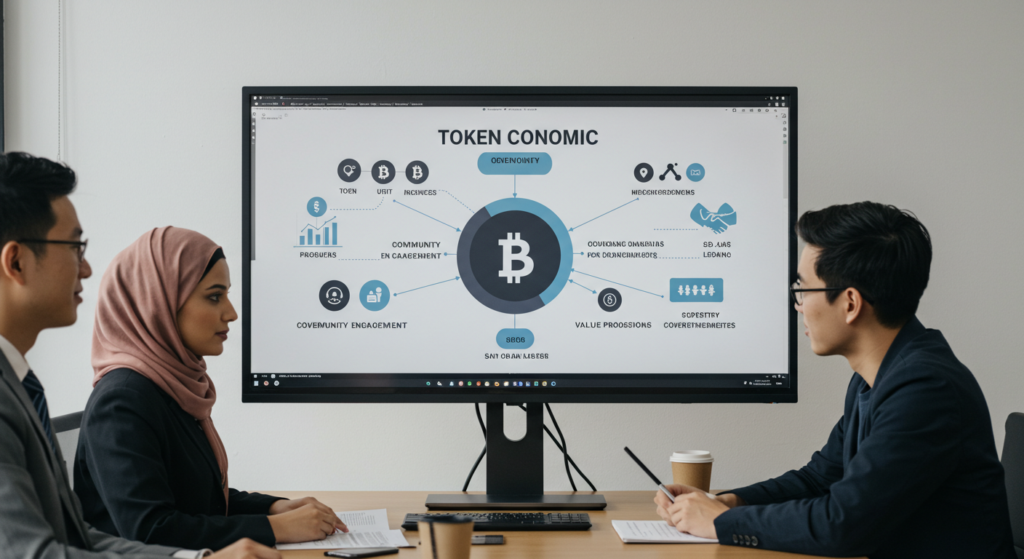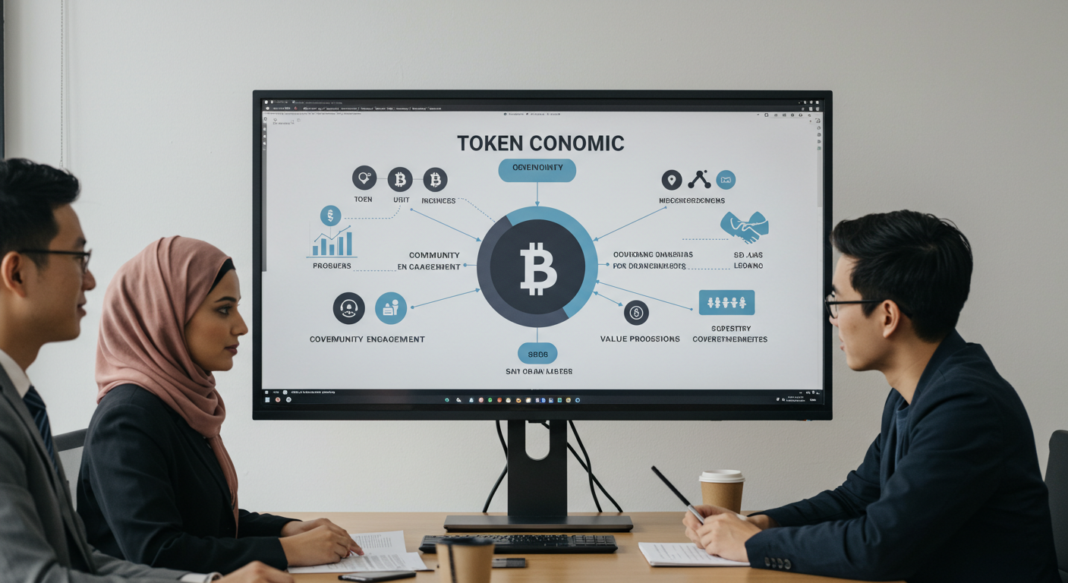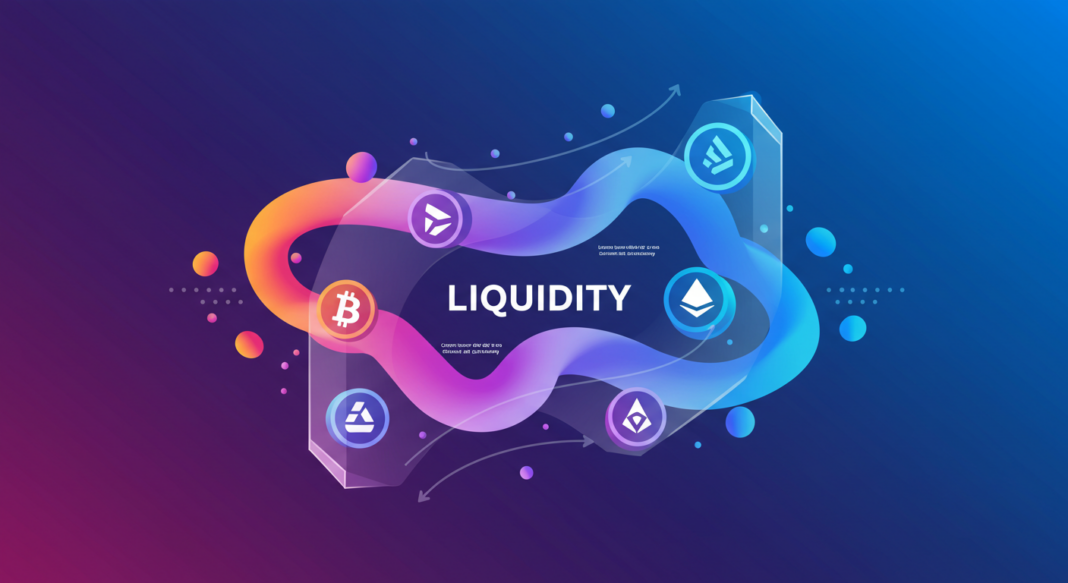
This guide offers a comprehensive overview of tokenomics, equipping you with the knowledge needed to evaluate a cryptocurrency’s true value confidently. By analyzing aspects such as supply dynamics, distribution methods, and the token’s utility within its ecosystem, you can make informed investment decisions and assess the long-term viability of the project.
The cryptocurrency market is vast and constantly evolving, making it challenging for investors, developers, and enthusiasts to identify which projects hold long-term value. One of the key ways to assess a cryptocurrency’s potential is by understanding its tokenomics, the economic framework governing the creation, distribution, and utility of a token.
What is Tokenomics?
Tokenomics (token economics) refers to the economic model of a cryptocurrency, detailing how tokens are created, distributed, utilized, and destroyed within its ecosystem. A well-designed tokenomics model ensures the long-term sustainability and growth of a cryptocurrency project, while poor tokenomics can lead to instability or failure.
Key Components of Cryptocurrency Tokenomics
1. Total Supply
This refers to the maximum number of tokens that will ever exist in the cryptocurrency ecosystem, whether they are pre-minted or gradually released into circulation through mechanisms such as mining or staking. Understanding the total supply is crucial for assessing the long-term value of a token, as it provides insight into potential scarcity.
Circulating Supply is the number of tokens that are currently available for trading in the market and are in the hands of investors. The circulating supply can fluctuate with token sales, buybacks, or burns.
Why it matters
A low circulating supply relative to the total supply could indicate potential inflation once more tokens are released, diluting existing holdings. A limited total supply, such as Bitcoin’s cap at 21 million, can create a sense of scarcity that might drive demand and, consequently, value over the long term.
2. Token Distribution:
Understanding how tokens are allocated is vital to analyzing potential risks and benefits within a cryptocurrency project. Pre-mined Tokens, are tokens that are created and distributed before the official launch of the project. They often serve as initial funding for the development team or early investors. Initial Coin Offerings (ICOs) or Token Sales, allow projects to raise capital by selling tokens to early investors, often at a discounted rate. ICOs can play a significant role in the project’s initial funding and community building.
A portion of the total supply is usually allocated to the project’s developers and founders as compensation for their contribution. Understanding the percentage they hold can indicate potential conflicts of interest. Then tokens are set aside for rewarding community engagement, staking, governance participation and ecosystem partnerships are essential for fostering a vibrant community and ensuring sustainable growth.
Why it matters:
Centralized allocation structures, where a high percentage of tokens are controlled by a small group (like founders and developers), can lead to market manipulation or significant sell-offs that adversely affect token stability. And an equitable and transparent distribution encourages trust and collaboration within the community.
3. Crypto Tokenomics Utility and Use Cases
Tokens derive their value from their role within the blockchain ecosystem. Tokens can be used to purchase goods or services within their native platform or in the broader market. Their utility as a currency can affect demand. Holding tokens often grants users voting rights on key decisions affecting the project’s direction, allowing them to influence protocol upgrades, funding decisions, or governance structures.
Users are able to lock up their tokens to help secure the network or facilitate transactions, earning rewards in return. This incentivizes active participation and helps stabilize the network. It can provide holders with exclusive access to certain features, platforms, or services, creating additional value through scarcity.
Why it matters
Tokens that support multiple, high-demand use cases are generally more resilient and have sustainable value, as they can adapt to market demands. While tokens lacking clear utility may struggle to find a user base, making them vulnerable to price volatility and potential failure.
4. Inflation and Deflation Mechanisms

The supply dynamics of tokens can significantly influence their market behavior that is these tokens have a mechanism that allows for continuous minting of new tokens. This strategy is often designed to incentivize participation in the network, such as rewarding miners or stakers. However, without control, this can lead to excessive supply and diminished value. On the other hand, deflationary mechanisms involve the burning of tokens, effectively removing them from circulation. This can increase scarcity and potentially elevate the token’s market price if demand remains strong.
Why it matters:
Unchecked inflation can erode the value of existing tokens over time, making it crucial to monitor how new tokens enter circulation. Mechanisms that reduce supply, such as periodic burns or buybacks, can enhance long-term valuation by increasing scarcity and demand.
5. Governance Model
The governance structure of a cryptocurrency influences how decisions are made and can affect its direction and sustainability. In this model, token holders actively vote on proposals through a blockchain-based system, this decentralized approach means that the community collectively influences the project’s direction, enhancing stakeholder involvement. Also decisions may be made by a core team or foundation, with token holders providing input but not voting on every decision. This can lead to faster decision-making but may compromise the decentralized ethos.
Why it matters:
Decentralized governance fosters a sense of community ownership and can lead to more thoughtful decision-making across the cryptocurrency ecosystem. While centralized governance can streamline operations and rapid responses to market changes but may reduce transparency and trust among participants.
6. Incentives and Rewards
Effective tokenomics often incorporates reward systems to encourage active participation and network security. Participants are compensated through mining rewards for validating transactions and maintaining network integrity. This incentive plays a vital role in the security of proof-of-work networks.
Staking Rewards are tokens earned by users for locking their tokens in the network to contribute to its security and operations. This encourages participants to hold tokens rather than sell them, potentially stabilizing the price.
Cryptocurrency Liquidity Mining is an incentives offered to users who provide liquidity to decentralized exchanges (DEXs), helping to enhance market depth and reduce volatility.
Why it matters:
A well-structured incentive model is critical for attracting and retaining active network participants, ultimately ensuring long-term viability and growth. And unsustainable incentives can lead to market distortions, including inflation and price crashes, highlighting the need for balanced tokenomics.
How to Evaluate a Cryptocurrency’s Tokenomics
Whitepaper Analysis:
- Check strategies for managing supply, inflation, and incentives.
- Understand the token’s role (transactions, governance, service access).
- Review allocation details among team, investors, and community.
Team and Community
- Assess the experience and background of founders and developers.
- Evaluate community engagement and sentiment through forums and social media.
An active and engaged community can be a positive sign. Look for forums, social media activity, and online discussions to gauge community sentiment and involvement. High community support can contribute to the project’s sustainability and growth.
Market Performance:
- Look at trading volume, liquidity, and price trends to gauge stability and investor confidence.
Competitor Comparison:
- Compare token distribution, supply metrics, use cases, and adoption rates with similar projects
Use Cases and Adoption Rates.
Analyze whether the token has clear use cases that are being adopted by users and businesses. Projects with real-world applications tend to have stronger value propositions. Look at the reward systems in place for users, such as staking and liquidity provision. Effective incentives can drive user participation and engagement, adding intrinsic value to the token.
Red Flags in Cryptocurrency Tokenomics
Unrealistic Promises: Be cautious of claims that guarantee high returns without solid evidence. Any indication of “guaranteed profits” is often a significant red flag.
Non-Transparent Allocation: Lack of transparency in token distribution can indicate potential issues. If the project doesn’t clearly outline how tokens are allocated, it may lead to unfair advantages and mistrust.
High Centralization: If a small group holds a majority of the tokens, it poses governance risks and undermines the project’s intended decentralization, favoring a select few over the community.
Unsustainable Rewards: Excessively high staking or mining rewards often suggest a flawed economic model. Such incentives may not be maintainable and can result in a sharp decline in token value.
Future Trends in Tokenomics

Projects may adapt token supply based on market conditions, helping to stabilize value and address demand shifts. Expect a rise in decentralized governance, where community members have a stronger voice in decision-making processes, fostering engagement and ownership. Also, more tokens may be linked to tangible assets like real estate or commodities, enhancing credibility and providing clearer utility, thus bridging digital and traditional economies.
Conclusion: Understanding tokenomics is essential for anyone navigating the cryptocurrency space. By evaluating a project’s supply dynamics, utility, governance, and incentives, you can identify tokens with genuine value and avoid speculative pitfalls. Always conduct thorough research, consult whitepapers, and leverage trusted resources to make informed decisions. For more in-depth analysis, consider visiting our YouTube channel at KryptoStreetTV and our tiktok As the cryptocurrency ecosystem evolves, staying informed about tokenomics will empower you to capitalize on opportunities and contribute to building a sustainable, decentralized future.





